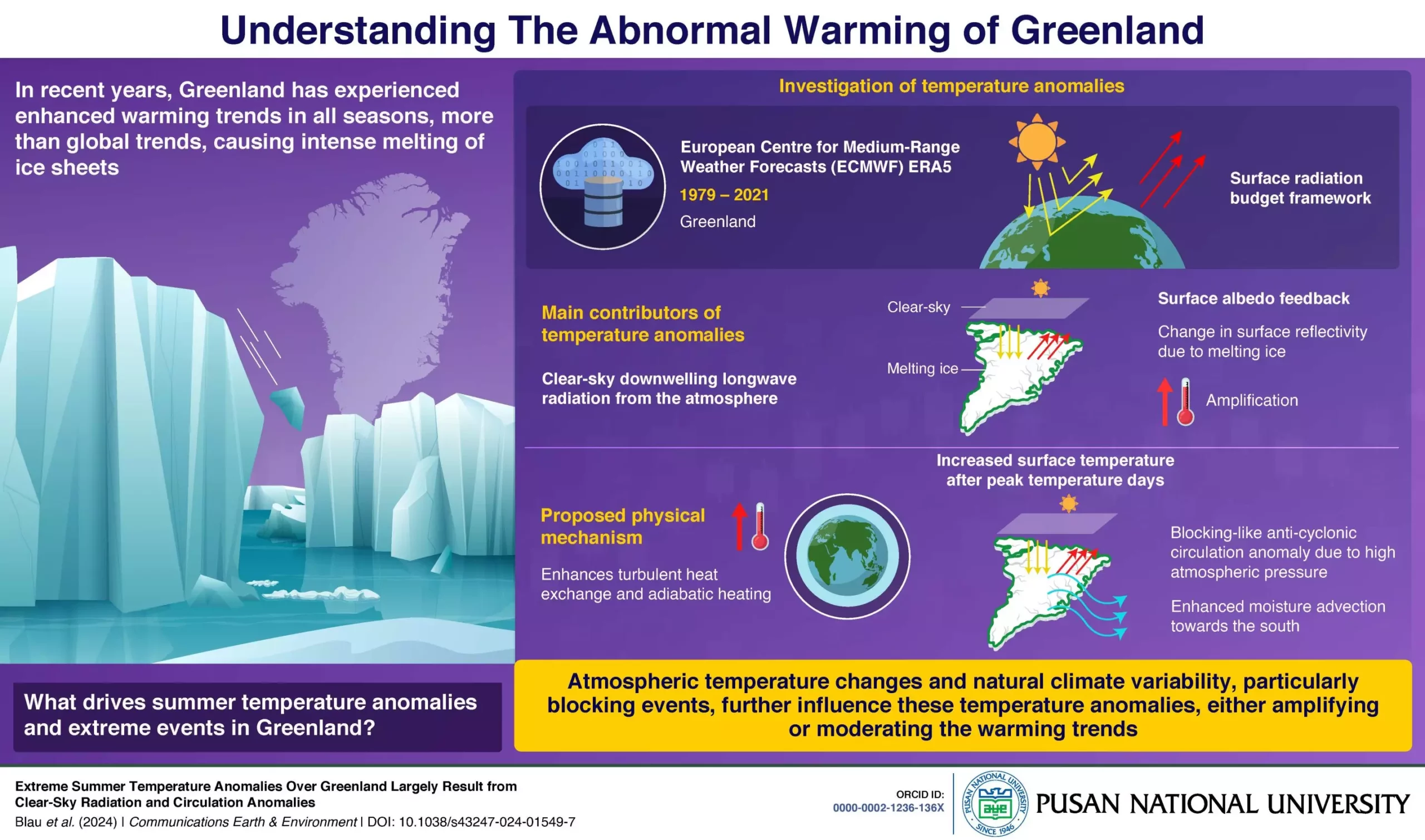Climate change has been a pressing issue in recent years, with global warming at the forefront of environmental concerns. One of the most alarming consequences of this phenomenon is Arctic Amplification, a process that has caused Greenland to warm at a faster rate than the rest of the world. This accelerated warming has resulted in increased ice sheet melting, posing a significant threat to coastal areas and ecosystems worldwide.
Exploring the Drivers of Arctic Amplification
A team of researchers from Korea, led by Professor Kyung-Ja Ha, delved into the anomalous warming trends in Greenland from 1979 to 2021. Their study, published in the journal Communications Earth & Environment, focused on understanding the year-to-year perturbations of the surface energy budget to explain the extreme temperatures observed in Greenland. By employing a surface energy budget framework, the researchers were able to identify the dominant factors contributing to Greenland’s surface warming.
The Role of Clear-Sky Radiation in Greenland’s Warming
The findings of the study revealed that increases in clear-sky downwelling longwave radiation were significant drivers of Greenland’s warming trends. This heat radiated by the atmosphere to the surface on clear-sky days, coupled with surface albedo feedback, played a crucial role in amplifying the warming effects. The researchers identified an increase in atmospheric temperature as the primary driver of this increase in clear-sky radiation, emphasizing the importance of understanding the intricacies of the atmospheric processes at play.
The study also highlighted the impact of natural climate variability, particularly related to the Greenland blocking index, on extreme temperature events in Greenland. These modes of variability can either amplify or moderate warming trends, leading to fluctuations in temperature extremes. By considering the interplay between natural variability and anthropogenic influences, the researchers were able to gain valuable insights into the complex dynamics driving Greenland’s warming trends.
By shedding light on the drivers of Greenland’s extreme summer temperatures, this study provides crucial insights that could inform projections for the future development of the Greenland ice sheet. With the potential for rapid sea-level rise as a result of accelerated ice sheet melting, understanding and addressing the factors contributing to Arctic Amplification are essential for mitigating the impacts of climate change on coastal areas and ecosystems globally.
The research conducted by Professor Ha and her team underscores the importance of studying the specific causes of extreme temperature events in Greenland. By unraveling the complex interactions driving Arctic Amplification, scientists can better predict future climate impacts and develop strategies to combat the detrimental effects of global warming on fragile Arctic ecosystems.



Leave a Reply